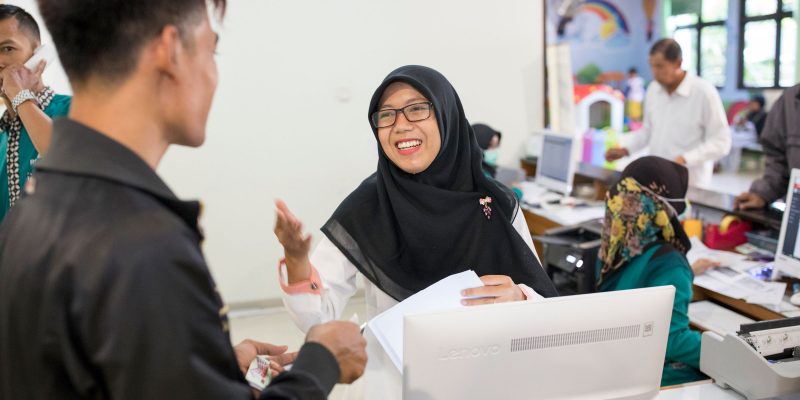
Focusing on government priorities may help achieve greater impact. As described above, the issues of project sustainability were addressed during the design phase, as the GOI committed publicly to taking the lessons learned from compact implementation and using them to either scale-up interventions or change their own implementation modalities and policies.[[As the compact entered the final year of implementation, MCA-Indonesia took seriously its charge to outline these “models” of application and “lessons learned” for its GOI stakeholders as reflected in the large number of studies produced. The best example is the Green Knowledge repository: https://pengetahuanhijau.batukarinfo.com.]] This commitment was possible because, during the program design phase, MCC and its Indonesian counterparts selected areas of interest to the GOI to get relatively more traction and high-level interest despite MCC being a relatively small donor in the country.
Striking a balance between high-profile activities and streamlined implementation is critical. Projects that generated a greater level of interest and involvement from stakeholders simply took longer to be implemented because of increased bureaucratic obstacles. If it had been possible for the Indonesian legislature to ratify the compact, some of this bureaucratic inertia may have been overcome or avoided; though, it is also possible that greater visibility to legislators would have further delayed project implementation. However, the flexibility afforded by the compact’s structure and the scalable design of the projects allowed MCA-Indonesia to be opportunistic in recruiting mid-level champions for each of the projects as GOI staff shifted, helping to accelerate various components. For example, the establishment of the Peatland Restoration Agency was not contemplated in the compact but was an excellent opportunity to catalyze the work that had been started under the PLUP Activity in line with the GOI’s focus on preventing peat fires.
MCC’s competitive advantage in Indonesia from the GOI’s perspective was the ability to experiment. The projects manifested the GOI’s own desire to break with the status quo and use compact projects and the institutional setup of MCA-Indonesia to reach beneficiaries in ways that otherwise were not possible under the existing regulatory framework. For example, the GOI was not able to provide grants directly to community-owned microgrid energy projects through their own regulations, while MCA-Indonesia could make such grants under the compact. Another example was the way that the results of participatory village boundary-setting exercises fed up to approved, national-level mapping efforts instead of conflicting with them. The desire to improve systems led to unforeseen advances in the policy environment, particularly for the Nutrition and Procurement Modernization Projects. In both cases, the compact projects were situated in an overall context of reform and change, had been designed to be adaptable and scalable to manage this change, and were able to use MCC’s country-led model to make policy advances.
MCC should consider policy implementation at all levels of government, from national to the village level. MCC and the GOI knew that a set of interventions at the national level would not be enough to achieve a meaningful reduction in poverty. In this case, it was critical that the concept of country ownership be interpreted as ownership by multiple levels of government and local stakeholders including, for example, ratification of agreements by local legislatures, but with such a widely dispersed program, this resulted in complexity, with hundreds of local governments involved in the compact.

